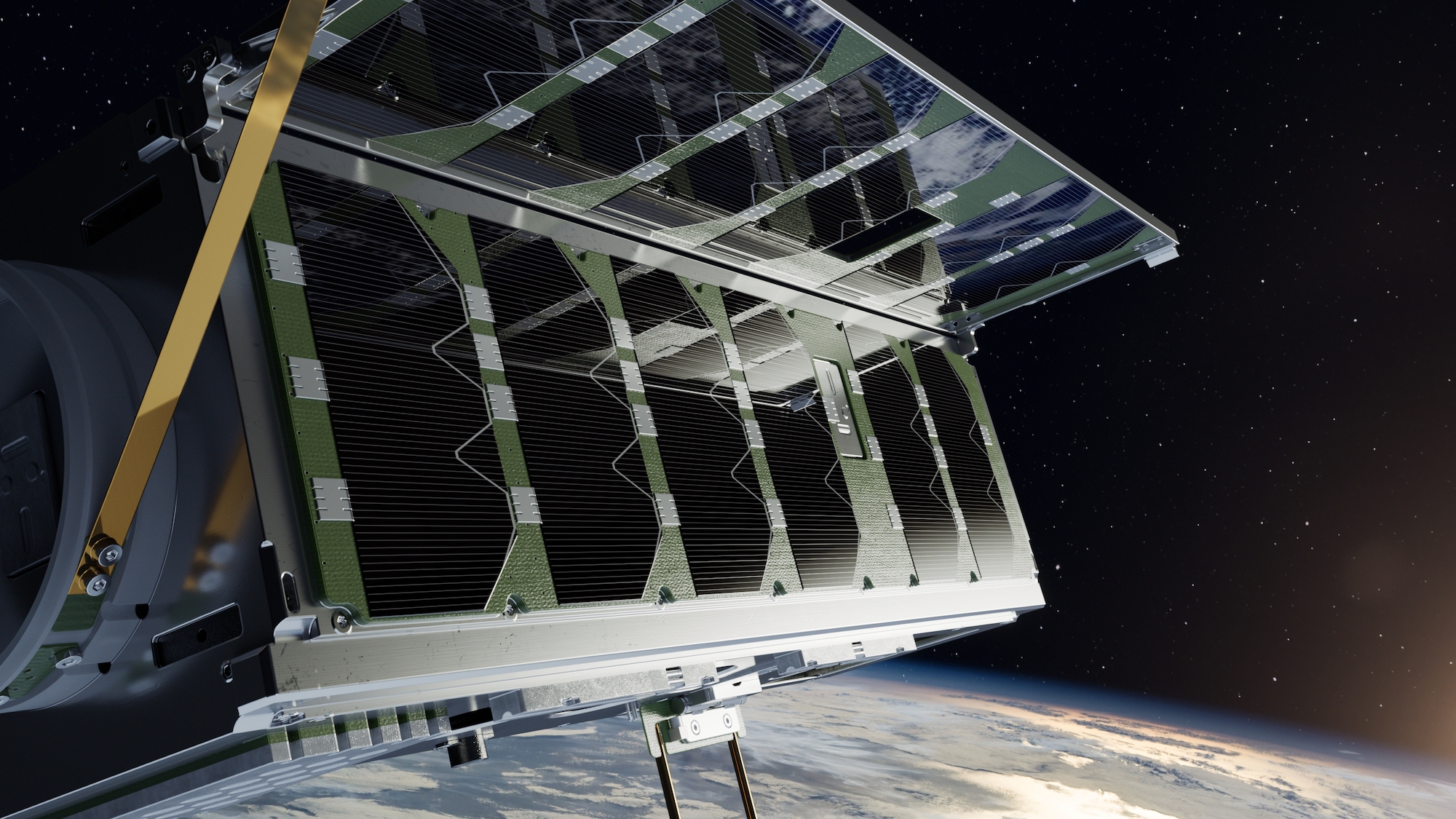

It took eight years and the collaborative efforts of over 600 interdisciplinary undergraduate students, but Estonia’s second satellite is finally on track to launch later this week. Once in orbit thanks to a lift aboard one of the European Space Agency’s Vega VV23 rockets, the tiny 8.5 lb ESTCube-2 will test an elegant method to potentially help clear the skies’ increasingly worrisome space junk issue using a novel “plasma brake.”
Designed by Finnish Meteorological Institute physicist Pekka Janhunen, the electric sail (E-sail) technology harnesses the physics underlying Earth’s ionosphere—the atmosphere’s electrically charged outer layer. Once in orbit, Estonia’s ESTCube-2 will deploy a nearly 165-foot-long tether composed of hair-thin aluminum wires that, once charged via solar power, will repel the almost motionless plasma within the ionosphere.
[Related: The FCC just dished out their first space junk fine.]
“Historically, tethers have been prone to snap in space due to micrometeorites or other hazards,” Janhunen explained in an October 3 statement ahead of the mission launch. “So ESTCube-2’s net-like microtether design brings added redundancy with two parallel and two zig-zagging bonded wires.”
If successful, the drag should slow down the tiny cubesat enough to shorten its orbital decay time to just a two-year lifespan. Not only that, but it would do so without any physical propellant source, thus offering a lightweight, low-cost alternative to existing satellite decommissioning options.
“It is exciting to see if the plasma break is going to work as planned… and if the tether itself is as robust as it needs to be,” Carolin Frueh, an associate professor of aeronautics and astronautics at Purdue University, tells PopSci via email. “The longer a dead or decommissioned satellite is out there, the higher the risk that it runs into other objects, which leads to fragmentation and the creation of even more debris objects.”
According to Frueh, although drag sails have been explored to help with Low Earth Orbit (LEO) satellites’ end-of-life maneuvers in the past, “the plasma brake technology has the potential to be more robust and more easily deployable at the end of life compared to a classical large solar sail.”
After just seven decades’ worth of space travel, junk is already a huge issue for ongoing private- and government-funded missions. Literally millions of tiny trash pieces now orbit the Earth as fast as 17,500 mph, each one a potential mission-ender. Such debris could also prove fatal to unfortunate astronauts in their path.
Although multiple international efforts are underway to help mitigate the amount of space junk, even the process of planning such operations can be difficult. Earlier this year, for example, an ESA space debris cleanup pilot project grew more complicated after its orbital trash target reportedly unexpectedly collided with other debris. On October 2, the Federal Communications Commission issued its first-ever orbital littering fine after satellite television provider Dish Network failed to properly deorbit a decommissioned, direct broadcast EchoStar-7 satellite last year.
“As satellite operations become more prevalent and the space economy accelerates, we must be certain that operators comply with their commitments,” Enforcement Bureau Chief Loyaan A. Egal said at the time.
Estonia’s second-ever satellite is scheduled to launch on October 7 from the ESA’s spaceport in French Guiana.
